A gate is left open, the dog dashes out the door when company comes, or he bounds out of the car as soon as the door is opened. Even dogs kept on a leash need to come when they are called. Here's some things you can do to keep your dog safe.

The One Thing Every Dog Should Know
by Ragtimelil
Every dog should come when it is called, even if it is never off the leash. Here's some tips to make this happen.
The Basics
Rule One and Rule Two
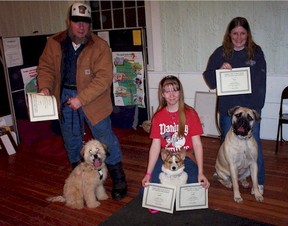 When I taught dog obedience classes, some students said their dog didn't need to learn to come when called because they were never allowed off leash. I pointed out that it could happen by accident. A dog that gets loose and won't come to its owner can be in serious danger. Training even an older dog can have real benefits.
When I taught dog obedience classes, some students said their dog didn't need to learn to come when called because they were never allowed off leash. I pointed out that it could happen by accident. A dog that gets loose and won't come to its owner can be in serious danger. Training even an older dog can have real benefits.
There are some rules to follow when teaching a dog of any age to come when it is called. Rule One is, never, ever call the dog for something that he or she will perceive as unpleasant. If he doesn't like to be crated, or having its toenails trimmed, or getting a bath, don't call him - go get him. Calling a dog to punish it will undo any training you have done in a short amount of time.
Rule Two is, always reward the dog when he does come to you. In the first stages of training, make a fuss over the dog with treats, games, petting or whatever the dog truly likes. Later, when the dog is reliable, rewards can be reduced to just verbal praise or a pat on the head.
Step One
Now that you have the rules, how do we go about actually training? First think about what word you use to call your dog. If you have a puppy and are starting fresh, a simple word like "come" will do. If you've been yelling at your dog to come for years and he ignores you, try using a different word like "here" so you can start training without having to overcome a negative response. Whatever you use, be consistant. And, no, the dog's name is not a command.
Find something that your dog truly loves, whether treats or a game of fetch. I find treats are the easiest to start with, but you can mix and match here. Start indoors. You can even keep a stash of treats in handy locations around the house. Call the dog and give a treat (or play a game.) If he doesn't move toward you, go to him, let him sniff the treat, back up a few steps until he moves toward you. Give the treat. Encourage him to move toward you by crouching down, clapping your hands,and sounding excited. Start to praise the dog as soon as he starts to move toward you. Keep it fun and soon he'll be running to you when he hears you call.
I strongly advise using a clicker for this training. If you click the instant the dog is doing something right, it lets him know what is expected and that a reward will follow. Check out clicker training for dogs.
Taking it Outside
Now you're ready to move outdoors. Get a long line - 20 to 40 feet will do, to attach to the dog's collar. You can make one out of sturdy cord and a clip. You will do the same calling and rewarding that you did in the house. Your first lessons should be in a quiet place with minimal distractions.
If the dog decides that he's more interested in sniffing, you might not have a treat with a high value. Try something else like real meat. Tug on the line to get the dog's attention. Don't drag him to you but short, little tugs will get him moving. Praise as soon as he starts to move toward you.
As the dog becomes more reliable, you can move into areas with more distractions. You can also practice a few times on a regular walk. As you are walking forward, shift into reverse. Back up and call the dog to you.
More Practice
If you can find a safe place, it's good to practice with the dog dragging a line or even off leash. Look for fenced areas, dog parks or whatever you can find. Maybe even borrow a friend's fenced yard.
If you really can't find a fenced area, find a place that is far from a road and practice with the dog dragging the line. Don't let him get so far away that you couldn't grab the line if you needed to.
Practice calling the dog for something fun like a game. Don't fall into the pattern of only calling him to take him home. Remember Rule One and Rule Two.
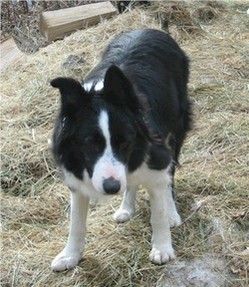
The Wait at the Door
The Last Rule
As you are teaching the dog to come when called, also establish a third rule. The dog should never, ever dash out of a door without permission. I use the word, "wait" which is different from my command to "stay." Wait means don't follow me. Stay means for the dog to remain in that spot until told he can move. Obviously, if I told the dog to stay and then left the house for several hours, he's not going to sit in one spot until I get home. Doing this would destroy any training I've done with the stay command. Using the word "wait" means he's free to move around; he just can't follow me. The actual word doesn't matter, as long as there is a different one for each command.
To teach the dog this rule, put him on a leash at first. Open the door but don't allow the dog to go out. Tell him wait. Close the door and reward. Use the same method in the car. When you are ready to let him go through the door, give him a release word like, "go on" or "ok."
A Word About Puppies
An advantage to starting young
I should mention here that puppies are never too young to start this training. Another advantage to starting really young puppies, less than 4 months old, is that they are still very dependent on their human moms and dads. Almost every puppy will follow its owner around.
This is a great time to take the puppy to a safe area and let it follow you off leash or dragging a light line. Encourage it to come to you by clapping your hands, bending down and playing when the pup gets to you. A pup who grows up following its owner will start a habit that will last a lifetime.
Once the pup reaches the independent stage at about 4 months of age, this may not always work.The pup will have more self-confidence and want to explore his surroundings. You can still use the methods outlined above, however. The sooner he learns to come when called, the safer he will be.
Useful Training Aids
 | Guardian Gear 20-Feet Cotton Web Dog Training Lead, Black Guardian Gear cotton web training leads provide extra strength for controlling large dogs. This extra long training lead is designed for distance training. Handle the dogs with ... Only $12.7 |
 | StarMark Clicker Dog Training System Ergonomic training clicker based on scientific principles of operant and classical conditioning. Only $5.0 |
 | Zuke's Chicken-Flavored Mini Naturals Dog Treats, 16 Ounces Dogs of all shapes and sizes love treats – the more, the better! Mini Naturals are the ideal size for frequent rewards without overfeeding. At just two calories each, every mois... Only $14.94 |
 | Karen Pryor, Getting Started: Clicker Training for Dogs Kit Kit for clicker training for dogs |
 | Guardian Gear Terylene Dog Training Treat Bag, Blue Training dog treat bag can be worn around the waist or clipped to a pocket or belt loop to keep treats handy during agility training sessions. The main pouch has a stay-open spr... Only $32.99 |
 | Reaching the Animal Mind: Clicker Training and What It Teaches Us About All Animals A celebrated pioneer in the field of no-punishment animal training, Karen Pryor is responsible for developing clicker training—an all-positive, safe, effective way to modify and... Only $8.69 |
You might also like
Training Your Dog with DistractionsHow to get your dog to listen to you when there are more interesting things t...
German Dog CommandsA list of the most common German dog commands, with pronunciations and examples.
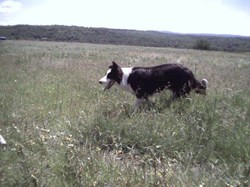


 How I Found My Free Family History Programon 09/05/2013
How I Found My Free Family History Programon 09/05/2013
 Finding a Graveon 09/01/2013
Finding a Graveon 09/01/2013
 Do Border Collies Make Good Pets?on 08/11/2013
Do Border Collies Make Good Pets?on 08/11/2013
 Hubert Patey - an Indentured Servanton 08/02/2013
Hubert Patey - an Indentured Servanton 08/02/2013

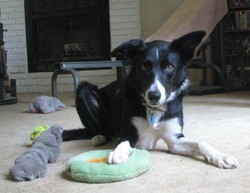
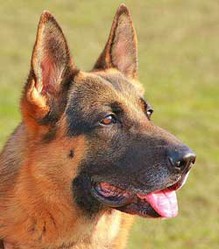
Do you have any more suggestions for training?
Thanks. I 'preciate it!
Great tips on training a dog. I will use them if I get a dog someday.
I should have added a thing about young puppies. Maybe I'll do that. There is an advantage to starting with a puppy younger than 4 months.
Yes, Rule #1 is important. Well-trained dogs will come to go in a crate, or for a bath, but dogs still in training don't need that pressure.
I hope you get a wonderful dog!
We don't have a dog, but probably will once my husband retires. But I will pass this on to our neighbors who just got a puppy. I especially like your Rule #1 -- don't call your dog if it's for something the dog feels is unpleasant or a punishment. I would've never thought of that!